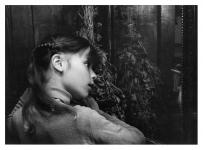|
Kind Kind |
Manufactured or assembled in France from 1911 to 1912.
Index of rarity in France: Rare (among non-specialized garage sales)
Inventory number: 7127
See the complete technical specifications
Chronology of cameras Kind
Le Kind est un jouet éducatif contemporain du petit Franceville lui aussi en carton. Il avait le très gros avantage de pouvoir faire cinq photos sans avoir à retourner en chambre noire, et par rapport aux petits détectives d'initiation, les plaques ne subissaient aucune contrainte.
C'est une amélioration du Photo-Quint qui avait été breveté en 1899.
L'objectif est une simple lentille fortement diaphragmée, d'environ 95 mm de focale, ce qui, pour un format de plaques de 45 x 45 mm correspond à une focale plutôt longue.
Il dispose d'un petit bouchon d'objectif servant d'obturateur pour les poses longues. Pour les poses courtes, le manuel d'emploi indique qu'il faut utiliser juste le doigt...

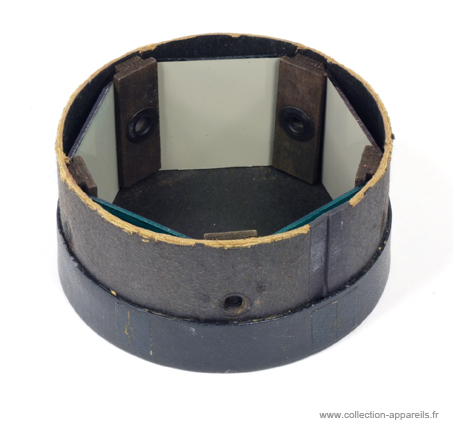
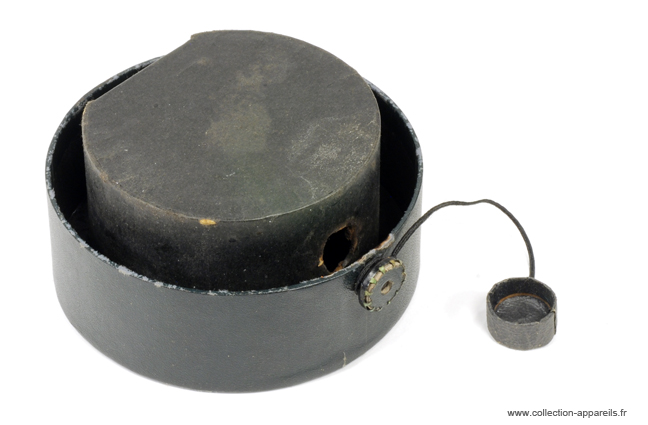
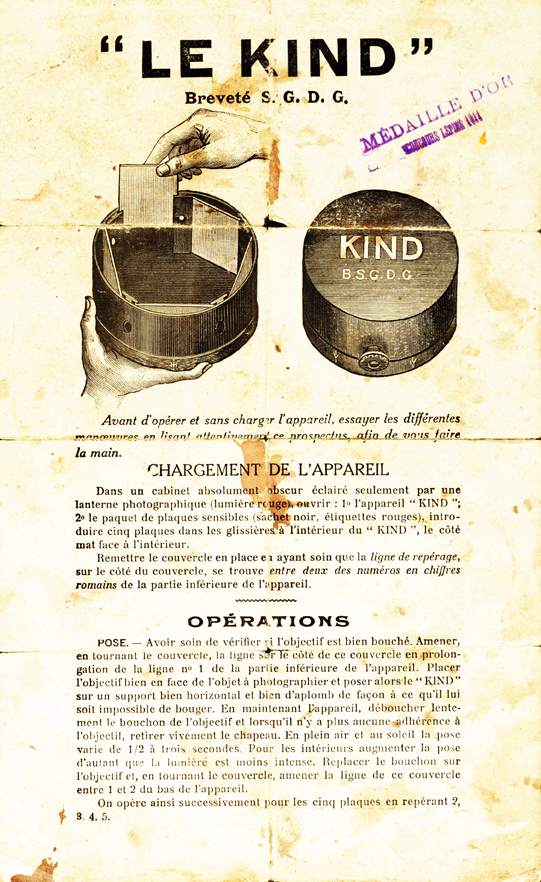
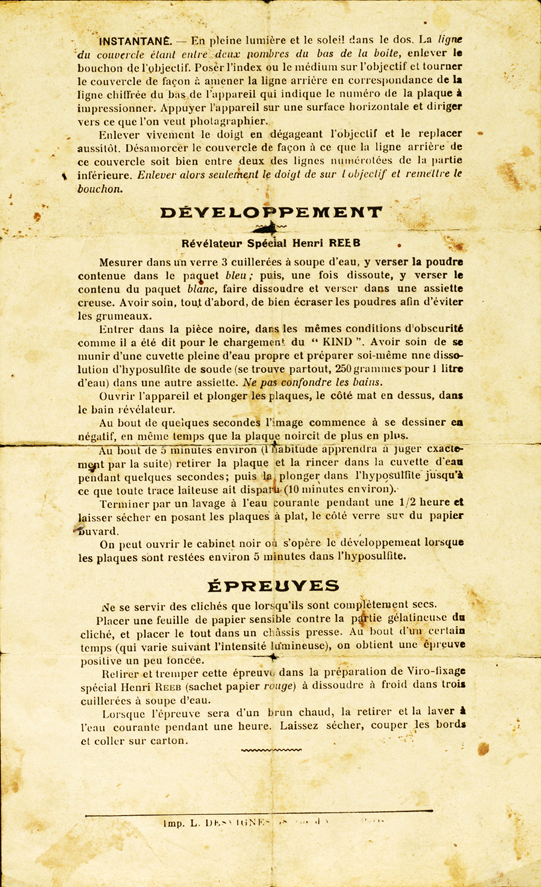
Historical account written by Arnaud Saudax and Etienne Gérard.
The KIND brand was registered on February 24, 1911, for photographic equipment. Let's explore its origins.
For fortunate (and affluent) collectors, KIND has a small family, and we'll begin with the ancestor. The one that appears to be the originator is the Photo-Quint.
The Photo-Quint was patented (Patent No. 283,890 on December 10, 1898) by the publisher-librarian Per Lamm (1855-1908) and inventor Adam Checinski, both of Swedish origin but residing in Paris. The patent was filed in various countries, including Austria.
Per Lamm registered the brand "Le Photo-Quint" for a camera on April 22, 1899 (Registration No. 062,148).
Another camera in the same family is the Binkie Camera, which was distributed in the Netherlands. It was essentially a Photo-Quint with an attractive yellow and red label, offered as a bonus with a subscription to the Rotterdamsche Nieuwsblad newspaper around 1910 and sold in stores with products and accessories for development. While the Binkie Camera seems to be associated with the publishing industry, its manufacturer is not known.
Around 1909, advertisements offered an improved variant, a nickel-plated Binkie Toestellen. While the appearance remained the same, the manufacturing methods and manufacturer likely differed significantly.
As for the Kind, it is an invention or reinvention attributed to Marthe Carême, born Amiot, who patented it under No. 426,575 on February 25, 1911 (two years after Per Lamm's death). She also registered the Kind brand. She won a prize in the 1911 Concours Lépine with this invention. It's worth noting that Marthe Carême had a company with a certain Émile Vasseur, which was dissolved in 1912. "Vasseur et Carême" was likely the manufacturer of the Kind.
Interestingly, genealogy reveals that Elsa Jeanne Flora, Per Lamm's daughter, married Marie Ernest Joseph Vasseur in 1917, who was the son of the architect Paul Vasseur. Could there be another connection between the Photo-Quint and the Kind?
Everything seems fine in the best of all possible worlds, except that photographic literature attributes the Photo-Quint to Offenstadt. Most likely, this is due to an advertisement that appeared in July and August 1899:
Under the pretext of art and mythology, this work presents "academies" disapproved of by "respectable" circles. Stradella is just a pseudonym, and the photographer is not known either... Only the printer is known, and it is "Offenstadt frères."
Curiously, on April 26, 1899, four days after the registration of the Photo-Quint brand, the Offenstadt Frères partnership was created, initially located at 18 Rue Feydeau. A judgment dated November 17, 1899, indicates that Moïse, one of the five brothers, retired from the partnership, and it was now located at 5 Rue Feydeau. Apparently, Offenstadt's literary production directly competed with Nilsson - Per Lamm editions in a relatively new niche at the time: "daring" novels illustrated with photography based on nature. However, Nilsson had fifty years of experience, while Offenstadt had only a few months. Moreover, the Photo-Quint was patented in several countries, representing a significant investment, but its commercialization seems to have been very limited, with no advertisements or mentions from any distributors. Nevertheless, it was distributed in the Netherlands.
Offenstadt's publications shifted toward youth-oriented newspapers, featuring comics and color. They began offering advertisements for various items, including cameras, magic lanterns, and even small projectors for animated images. It is highly unlikely that the Offenstadt brothers were the manufacturers of these items, as some of them even bore their original manufacturer's marks.
Coincidence or causality, at least two "gadget" cameras bear the same name as one of their titles: "l’Épatant," a copy of the little Franceville, and "l’As," a variant of the Gousset.
The Offenstadt Frères company later became the Société Parisienne d’Édition, including the publication of "Système D" among other ventures.
Offenstadt :
| 1899 | Éditeur 5, rue Feydeau (Librairie du Photo-Quint) |
| 31 mai 1902 | Éditeur 39, rue de Trévise à Paris |
| 1911-1925 | Éditeur Libraire 3, rue Rocroy |
Domicile Per Lamm (1855-1908)
| 1884 | 229, rue Saint-Honoré |
| 1888-1890-1891-1893 | 9, rue de Solferino |
| 1894-1896-1897-1898-1908 | 20, rue Jacob |
Bookshop Per Lamm
| 1888-1896 | 212, rue de Rivoli |
| 1896-1901 | 338, rue Saint-Honoré |
| 1901-1907 | 7, rue de Solferino |
Interesting links or bibliography :
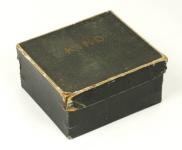 |
Add a link or element of bibliography, a picture taken with this camera, a picture of box or an ads about this camera
Your photos taken with the same camera:
Cameras from Ebay France (Kind) (Uploaded each 3 hours)







